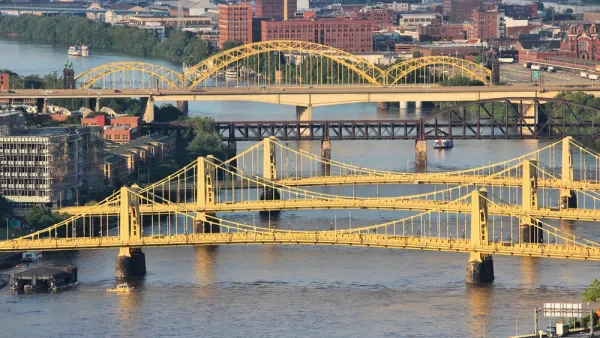With the federal government unable to agree on much of anything, state and local taxpayers are bearing the burden for repairing and replacing America's aging infrastructure says a new report from Standard & Poor’s Rating Services.
One of the many issues to have been largely left out of this year's presidential debates, America's growing infrastructure deficit (twice the size of the federal budget deficit) is unlikely to be addressed anytime soon by a federal government unable or unwilling to discuss trillions of dollars of new spending, reports Ashley Halsey III. In addition to the billions of dollars needed to replace aging roads and bridges, $30 billion is needed for the nation's ports, $107 is needed for the electrical grid, and $635 billion is needed to fix waste and drinking water systems.
"We see an expectation in the foreseeable future for reduced federal
funding," said Geoffrey E. Buswick, the analyst who wrote a recent Standard &
Poor's report on the subject. "The longer there is a tepid economic recovery,
the more difficult it is to raise rates. There's already a gap in
funding and it's only going to get greater, so it's the longer term that
we're more worried about than the shorter term."
While some of the funding for necessary infrastructure repairs may come from private investors, local users and taxpayers are increasingly being targeted to fill the federal shortfall.
FULL STORY: Burden for rebuilding infrastructure may fall to states

National Parks Layoffs Will Cause Communities to Lose Billions
Thousands of essential park workers were laid off this week, just before the busy spring break season.

Retro-silient?: America’s First “Eco-burb,” The Woodlands Turns 50
A master-planned community north of Houston offers lessons on green infrastructure and resilient design, but falls short of its founder’s lofty affordability and walkability goals.

Delivering for America Plan Will Downgrade Mail Service in at Least 49.5 Percent of Zip Codes
Republican and Democrat lawmakers criticize the plan for its disproportionate negative impact on rural communities.

Test News Post 1
This is a summary

Test News Headline 46
Test for the image on the front page.

Balancing Bombs and Butterflies: How the National Guard Protects a Rare Species
The National Guard at Fort Indiantown Gap uses GIS technology and land management strategies to balance military training with conservation efforts, ensuring the survival of the rare eastern regal fritillary butterfly.
Urban Design for Planners 1: Software Tools
This six-course series explores essential urban design concepts using open source software and equips planners with the tools they need to participate fully in the urban design process.
Planning for Universal Design
Learn the tools for implementing Universal Design in planning regulations.
EMC Planning Group, Inc.
Planetizen
Planetizen
Mpact (formerly Rail~Volution)
Great Falls Development Authority, Inc.
HUDs Office of Policy Development and Research
NYU Wagner Graduate School of Public Service





























